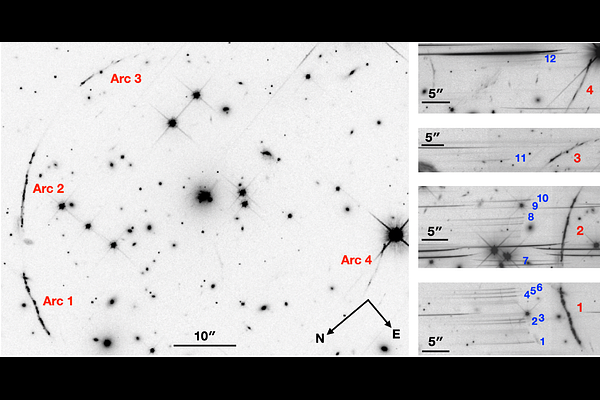Intergalactic Medium Tomography with the Sunburst Arc

Intergalactic Medium Tomography with the Sunburst Arc
Michelle A. Berg, John Chisholm, J. Xavier Prochaska, T. Emil Rivera-Thorsen, Michael D. Gladders, Keren Sharon, Claus Leitherer, J. J. Eldridge, Matthew Bayliss, Haakon Dahle, Jane R. Rigby, Anne Verhamme
AbstractGravitational lensing has transformed the field of gas tomography in the intergalactic medium (IGM) and circumgalactic medium (CGM). Here we use the brightest lensed galaxy identified to date, the Sunburst Arc ($z$$\approx$2.37), to constrain the physical size of foreground absorbers at $z$$\approx$2 in 2D. This galaxy is a confirmed Lyman continuum leaker, where its single leaking region is imaged 12 times over four separate arcs. The separations between the arcs allows for large scale tomography, while the distances between the images along an arc allow for small scale tomography. Using HST/WFC3 UVIS G280 grism observations, we extracted the spectra of the leaking region and fit for absorbers detected along these lines of sight using a binary population and spectral synthesis (BPASS) model for the galaxy. We identified two partial Lyman limit systems (pLLSs) and one Lyman limit system (LLS) across the different spectra and measured their physical sizes. We find consistent HI column densities across $\lesssim$2 kpc and an average HI mass of $\approx$10$^3$ ${\rm M}_\odot$ for the absorbers. Given the strong CIV lines associated with two of the absorbers, they are likely located within the CGM of foreground galaxies. The third absorber has no associated metal lines, so it is most likely within the IGM. This study provides the first tomography measurements of pLLSs/LLSs in the CGM and IGM at $z$$\approx$2.